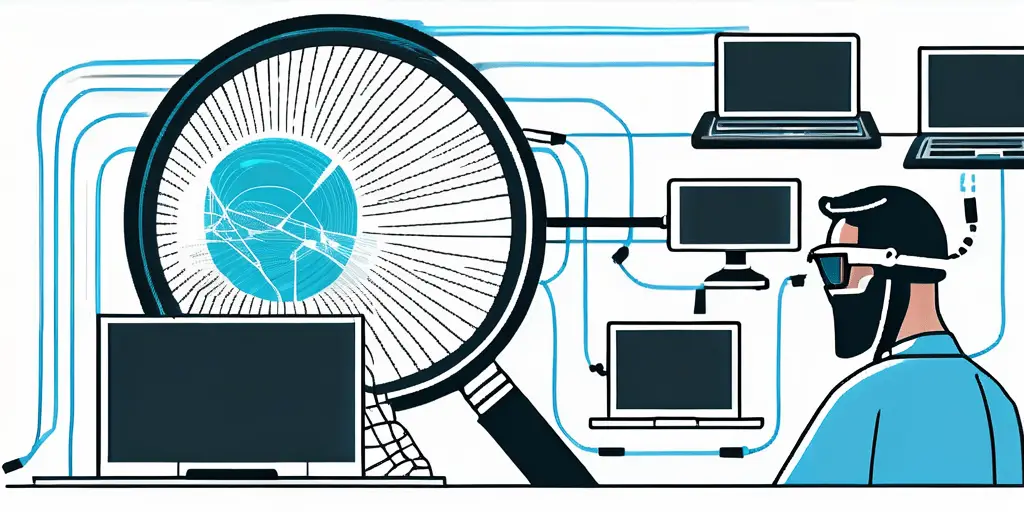One term often used to describe privacy and surveillance is “roving wiretaps.” But what exactly are roving wiretaps, and how are they related to the Patriot Act? This article will explore the details of roving wiretaps and their implications for national security and civil liberties. So, let’s explore this complex issue!
Understanding the Patriot Act
Before we can fully comprehend roving wiretaps, it’s important to have a solid understanding of the Patriot Act itself. The Patriot Act, officially known as the USA PATRIOT Act, is a law passed by the United States Congress in response to the September 11th attacks.
The Patriot Act’s history dates back to the aftermath of the tragic events of 9/11 when there was a pressing need to enhance the government’s surveillance capabilities to prevent future terrorist acts. The Act contains several sections, or provisions, that grant law enforcement agencies broader powers to investigate and gather information on potential threats to national security.
The History of the Patriot Act
President George W. Bush signed the Patriot Act into law on October 26, 2001. It was initially passed with overwhelming bipartisan support, as lawmakers sought to strengthen national security measures and equip law enforcement agencies with the tools to combat terrorism.
However, the Act has sparked heated debates and raised concerns among civil liberties advocates who argue that it infringes upon individuals’ privacy rights. Critics claim that certain provisions of the Act go too far and have the potential to be abused, leading to unwarranted government surveillance and intrusion into the lives of innocent citizens.
Key Provisions of the Patriot Act
Under the Patriot Act, law enforcement agencies gained expanded surveillance powers. Some of the key provisions of the Act include the ability to:
- Conduct roving wiretaps
- Collect business records and other tangible things
- Monitor the activities of individuals deemed to be a threat to national security
- Share intelligence information among different government agencies
While all of these provisions have raised concerns, this article will focus on the first provision on that list, roving wiretaps.
The Intricacies of Roving Wiretaps
Roving wiretaps, as authorized by the Patriot Act, allow law enforcement agencies to monitor a specific individual’s communications across multiple devices without having to obtain separate warrants for each device. This provision was designed to keep up with the rapidly evolving technology landscape and the increasing use of multiple communication devices by potential threats to national security.
However, the use of roving wiretaps has been controversial. Critics argue that this provision lacks adequate safeguards to prevent abuse and protect the privacy of innocent individuals. They raise concerns about the potential for overreach, where law enforcement agencies could monitor the communications of individuals who are not the intended targets of an investigation.
Proponents of roving wiretaps argue that they are a necessary tool in the fight against terrorism. They believe that the flexibility provided by this provision allows law enforcement agencies to effectively track and gather evidence on individuals who may be using various devices to communicate and plan illegal activities.
It is important to note that roving wiretaps are subject to certain limitations and oversight. Law enforcement agencies must follow strict procedures and obtain court approval before initiating surveillance. Additionally, the Act includes provisions for regular reporting and oversight by Congress to ensure that these powers are not abused.
As the debate surrounding the Patriot Act continues, balancing national security and civil liberties protection is crucial. The intricacies of roving wiretaps highlight the ongoing tension between the need for effective surveillance and the preservation of individual privacy rights.
Defining Roving Wiretaps
As the name suggests, moving wiretaps involve wiretapping a suspect’s communications without specifying the particular phone line or electronic device to be monitored. Instead, they allow law enforcement agencies to track and intercept multiple devices a target individual uses.

The Legal Basis for Roving Wiretaps
The legal basis for using roving wiretaps can be found in the amendments made to the Foreign Intelligence Surveillance Act (FISA) by the Patriot Act. FISA is a law that governs the surveillance and collection of foreign intelligence information in the United States.
Previously, law enforcement agencies were required to specify the exact phone line or electronic device to be monitored when obtaining a wiretap authorization. Roving wiretaps allows for greater flexibility in tracking suspects and frequently changing communication methods.
How Roving Wiretaps Work
Now that we understand the legal framework behind roving wiretaps let’s take a closer look at how they work. When a court authorizes a roving wiretap, law enforcement agencies can intercept the target individual’s communications regardless of the device or phone line used.
This means that if the suspect switches phones or starts using different communication channels, such as email, the authorities can continue monitoring their activities without obtaining additional authorizations.
However, it is important to note that roving wiretaps are subject to certain limitations and safeguards to protect individual privacy. The authorization for a roving wiretap must specify the identity of the target individual and provide sufficient evidence of their involvement in criminal activities or threats to national security.
Communications must be intercepted under a roving wiretap to minimize the collection of irrelevant information. Law enforcement agencies must ensure that only the communications of the target individual are intercepted and that the privacy of innocent individuals is not violated.
The Role of Roving Wiretaps in National Security
The use of roving wiretaps plays a crucial role in national security efforts. By allowing law enforcement agencies to adapt to rapidly evolving methods of communication, roving wiretaps enhance their ability to monitor and track potential threats.
Roving wiretaps, also known as “roving bugs” or “roving taps,” are a specialized form of surveillance that allows authorities to intercept communications on multiple devices used by a targeted individual, rather than being tied to a specific phone line or device. This flexibility is particularly valuable in cases where suspects frequently change phones or communication methods to avoid detection.
Roving Wiretaps and Counterterrorism Efforts
Counterterrorism efforts rely heavily on gathering intelligence and disrupting potential terrorist plots. Roving wiretaps provide an essential tool for intelligence agencies in their fight against terrorism, allowing them to stay one step ahead of individuals who might attempt to evade surveillance by frequently changing their communication methods.
These wiretaps enable investigators to discover connections, identify co-conspirators, and gather evidence that can be used to prevent and prosecute acts of terrorism.
In addition to monitoring communications, roving wiretaps can also track the physical location of a suspect through their mobile devices, providing crucial information for law enforcement agencies in preventing terrorist attacks.
The Impact on Domestic and International Surveillance
However, the use of roving wiretaps extends beyond counterterrorism efforts. They are also employed in domestic criminal and international espionage cases. By allowing the authorities to track suspects across multiple devices, roving wiretaps have proven to be valuable tools in investigations into various forms of criminal activity.
Domestically, roving wiretaps have been used in cases involving organized crime, drug trafficking, and public corruption, allowing law enforcement to gather evidence and build cases against individuals engaged in illegal activities. Internationally, these surveillance techniques are vital in monitoring foreign agents and uncovering espionage activities that threaten national security.
Controversies and Concerns Surrounding Roving Wiretaps
As with any surveillance technique, roving wiretaps have generated controversy and raised legitimate concerns about privacy rights and civil liberties.

Roving wiretaps, a surveillance method that allows law enforcement to intercept communications without specifying the targeted device or facility, have sparked intense debates among policymakers, legal experts, and privacy advocates. The intricate balance between national security interests and individual privacy rights has become a focal point in discussions surrounding the use of this controversial tool.
Privacy Concerns and Civil Liberties
Privacy advocates argue that the use of roving wiretaps can lead to indiscriminate collection of communications data and the potential for abuse by law enforcement agencies. Critics fear that innocent individuals may become unknowingly ensnared in surveillance efforts, leading to unjust invasions of privacy.
The evolving landscape of technology has added layers of complexity to these concerns. As communication methods advance and encryption becomes more prevalent, questions arise about the scope of surveillance activities and the extent to which individuals’ private conversations are monitored.
Protecting civil liberties while balancing the need for effective surveillance presents a complex challenge for lawmakers and the courts.
Legal Challenges and Court Rulings
Using roving wiretaps has faced legal challenges, with critics arguing that they violate the Fourth Amendment of the United States Constitution, which protects against unreasonable searches and seizures.
In recent years, courts have grappled with the issue. Some have upheld the constitutionality of roving wiretaps, while others have imposed limitations on their use and set stricter standards for obtaining such authorizations.
The debate over roving wiretaps continues to evolve as technology, legal interpretations, and societal values shape the landscape of surveillance practices in the digital age.
The Future of Roving Wiretaps
Given the ongoing debates and concerns surrounding roving wiretaps, it’s worth examining their potential future developments.
Roving wiretaps, a surveillance technique that allows law enforcement to track suspects who may switch phones or locations to avoid detection, have been controversial due to their implications for privacy and civil liberties. The debate has sparked discussions about the balance between national security interests and individual rights, leading to calls for increased oversight and transparency in their use.
Proposed Amendments and Revisions
In response to the criticisms leveled against roving wiretaps and the broader implications of the Patriot Act, proposed amendments and revisions have been made to strike a balance between security and privacy. These proposals aim to provide greater transparency, accountability, and oversight in using surveillance techniques like roving wiretaps.
Efforts to amend legislation governing roving wiretaps seek to address concerns about potential power abuses and constitutional rights violations. By introducing stricter guidelines and reporting requirements, lawmakers aim to ensure that roving wiretaps are targeted, proportionate, and subject to judicial review.
The Role of Technology in Shaping Surveillance
Technology continues to evolve rapidly, impacting the way surveillance is conducted. As new communication methods emerge, law enforcement agencies must adapt their techniques and technologies to protect national security while respecting individuals’ privacy rights.
The advancement of encryption technologies and the widespread use of digital communication platforms present both challenges and opportunities for surveillance practices. Law enforcement agencies must navigate the complexities of modern technology to gather evidence and intelligence while upholding legal and ethical standards.
As we move forward, engaging in ongoing discussions and debates about using roving wiretaps and other surveillance methods is important, ensuring that we strike the right balance between security and civil liberties in our ever-changing world.
Conclusion
Roving wiretaps are a powerful tool granted to law enforcement agencies under the Patriot Act. While they provide invaluable assistance in counterterrorism and criminal investigations, they also raise significant concerns about privacy and civil liberties. It is essential to have open and informed discussions about roving wiretaps and ensure that any surveillance measures strike a balance between national security and the protection of individual rights.

So, the next time you hear the term “roving wiretap,” you’ll better understand what it means and the important role it plays in our ever-changing world of surveillance.
As we navigate the complexities of surveillance and privacy in the digital age, the importance of robust cybersecurity cannot be overstated. Blue Goat Cyber, with its unparalleled expertise in cybersecurity, stands ready to protect your business from the ever-present threat of cyber attacks. Our veteran-owned company offers bespoke B2B services, including advanced medical device cybersecurity, thorough penetration testing, and compliance with critical standards like HIPAA and FDA for medical devices. If the intricacies of roving wiretaps and the broader implications of the Patriot Act concern you, it’s time to reinforce your defenses. Contact us today for cybersecurity help, and let us be your partner in securing your digital ecosystem and ensuring your operations thrive securely in this era of heightened surveillance.


